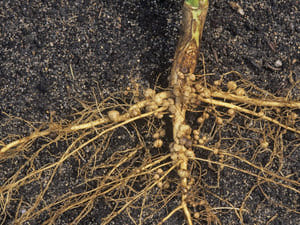| Edible Uses |
Edible Parts: Flowers; Seedpod.
Edible Uses:
Flowers - raw[2, 89, 105]. A sweetish-acid taste, they are a nice addition to the salad bowl[11, 183, K]. The flower buds are pickled and used as a condiment[183]. Seedpods - raw[2]. |
|
| |
| Medicinal Uses |
Plants For A Future can not take any responsibility for any adverse effects from the use of plants. Always seek advice from a professional before using a plant medicinally.
None known |
|
| Other Uses |
Wood.
Wood - very hard, beautifully grained, takes a very fine polish. Used for veneers[89, 200]. |
|
| Cultivation details |
| Landscape Uses:Specimen. Succeeds in most soils and pH types, but dislikes growing in wet soils, especially when these are of clay[200]. Prefers a deep sandy loam and a very sunny position[11, 182]. Thrives on chalk[11, 98] and in dry sandy soils[98]. Probably does best on a poorish soil[49]. Succeeds in light shade[200]. Dislikes drought[200]. Dormant plants are hardy to about -15°c[202]. The young growth in spring, even on mature plants, is frost-tender and so it is best to grow the plants in a position sheltered from the early morning sun[K]. Plants do not generally thrive at Kew, they prefer a hotter, continental climate in order to fully ripen their wood[11]. One report says that plants require cool greenhouse treatment in Britain[1], though several good specimens have been seen outdoors in this country[K]. The tree often does not flower freely in Britain, especially if the previous summer was cool. Plants are susceptible to coral spot fungus, especially when growing in areas with cool summers where the wood is not fully ripened[11]. Plants in this genus are notably resistant to honey fungus[200]. Resents root disturbance, plants should be planted into their permanent positions as soon as possible, preferably in May, and should be kept well watered until established[11]. Any pruning is best carried out in the winter[202]. A very ornamental plant[1], flowering well in Cornwall[59]. It flowers better when growing in a continental climate[200]. The flowers are produced on the branches of the previous or earlier years, and also on the trunk of the plant[82]. A good bee plant[108]. This species has a symbiotic relationship with certain soil bacteria, these bacteria form nodules on the roots and fix atmospheric nitrogen. Some of this nitrogen is utilized by the growing plant but some can also be used by other plants growing nearby[200]. Special Features:Not North American native, Blooms are very showy. |
|
| Propagation |
| Seed - best sown as soon as it is ripe in a cold frame[200]. Pre-soak stored seed for 24 hours in warm water then cold stratify for 3 months[113]. Sow spring in the greenhouse[78]. As soon as they are large enough to handle, prick the seedlings out into individual pots and grow them on in a greenhouse for their first winter. Plant them out into their permanent positions in late spring or early summer, after the last expected frosts. Plants resent root disturbance and are best planted out in their permanent positions as soon as possible[11]. Cuttings of half-ripe wood, July/August in a frame[200]. |
|





